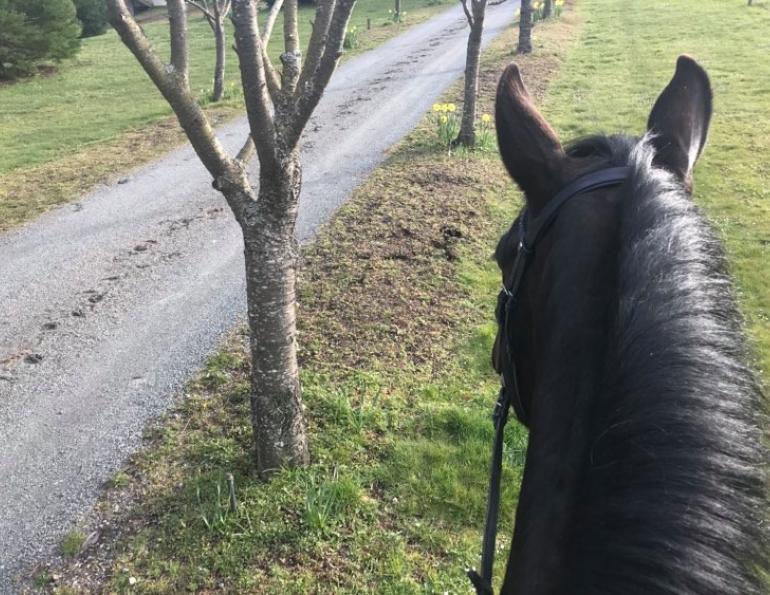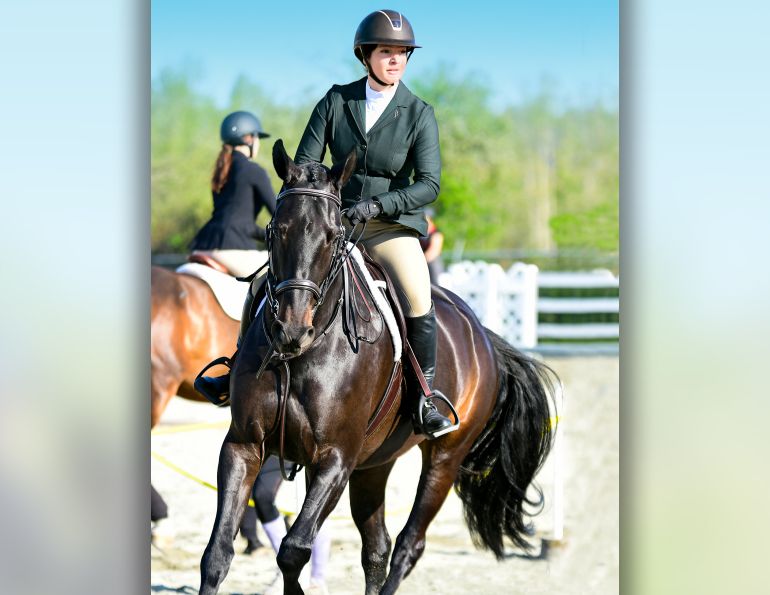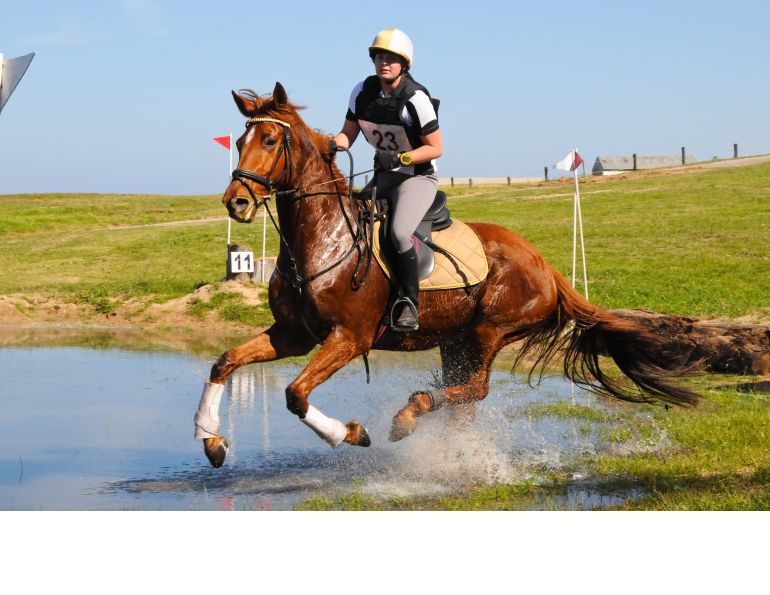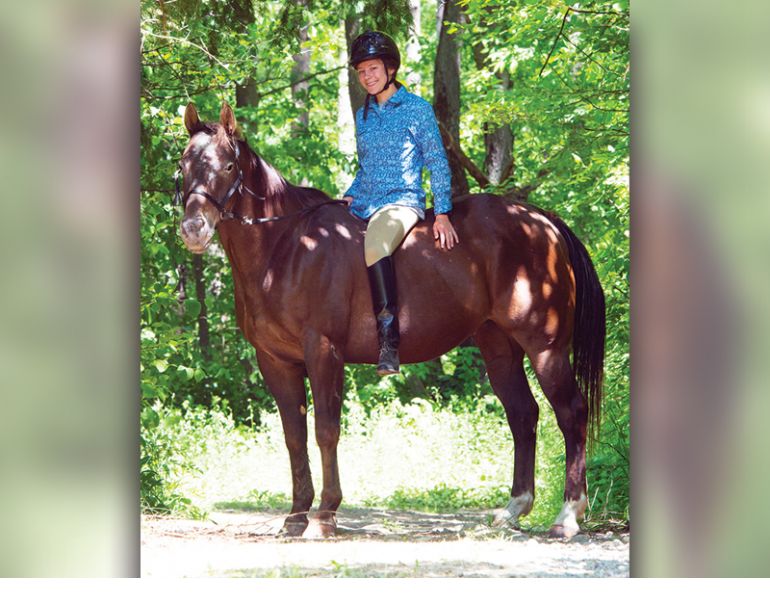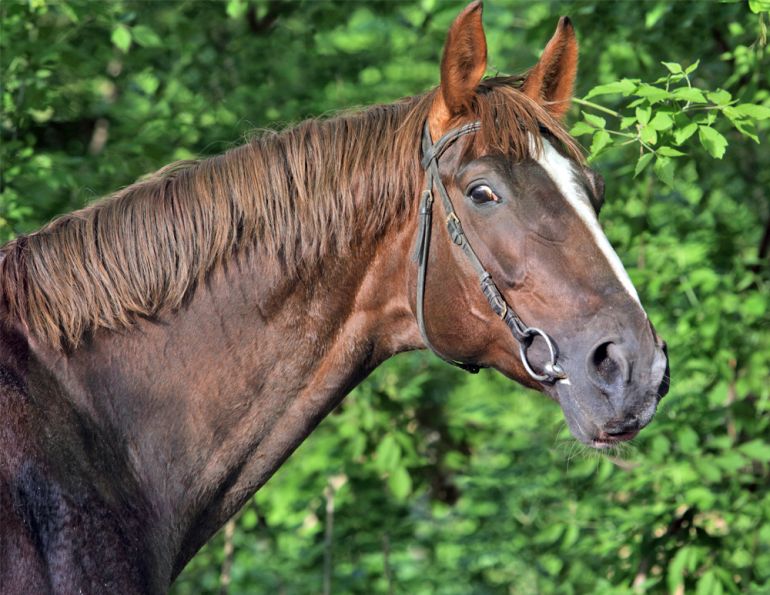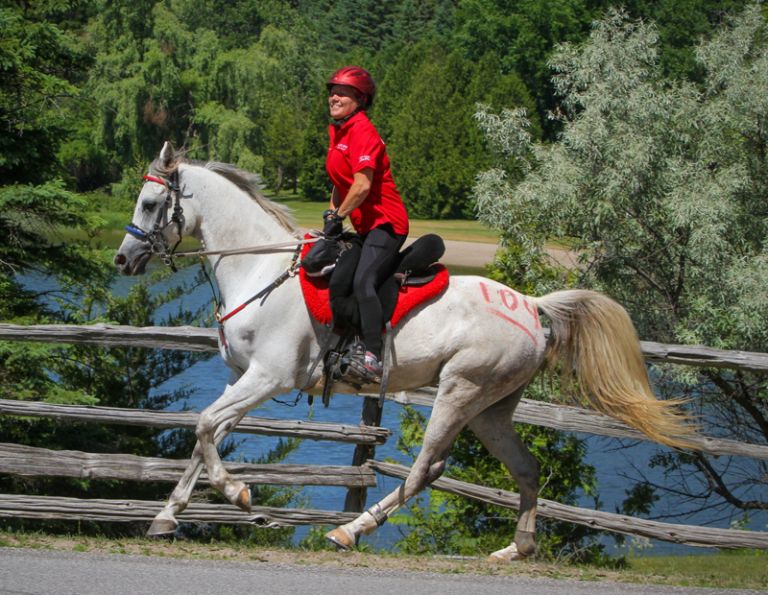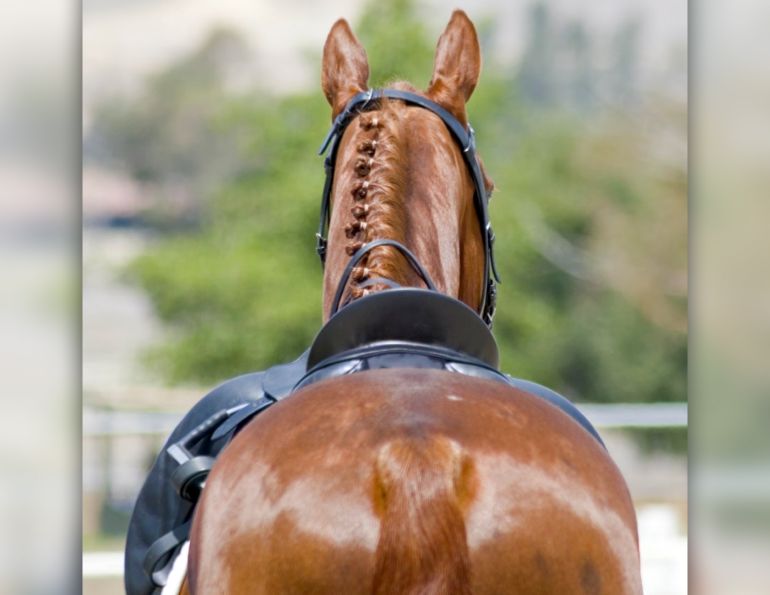By Sabine Schleese
All riders and horses will benefit from a correctly fitted saddle. However, heavier riders (I am referring here to women weighing 180-plus pounds and men weighing 250-plus pounds) often face a different set of challenges in finding a saddle that fits themselves as well as their horses.
Fitting Saddle to Rider
It is important that the saddle fits the rider first. No matter how well the saddle fits the horse, if the rider is not comfortable, their discomfort will always translate to the horse. This limits both the horse and rider in attaining optimum performance.
Obviously, a balanced rider has a better chance of not impacting the horse negatively. To determine whether you’re balanced in your saddle, sit in the saddle on a saddle stand with the saddle facing backward. Have a friend take a picture and then ask yourself these four questions:
- Is there the same amount of saddle flap and seat in front of and behind your leg?
- Does the flap length end four to seven inches below your kneecap?
- When viewed at a three-quarter angle, does your leg hang flush with the flap, or do your knee and toe turn out to the side?
- Are you balanced on your seat bones so that your shoulders, hips, and heels are naturally aligned without help, and do you feel your seat bones without pressure in the crotch?
Related: 11 Exercises to Improve Your Riding Position
The rider’s gender, leg length, leg position (hip articulation), hip circumference, and weight are all variables that need to be considered when fitting a saddle to the rider. Here is a brief outline of some general rider-saddle fit points to look at:
- Seat size to accommodate the rider’s buttocks.
- Seat width (the width of the saddle beneath the seat bones) to accommodate the width of the seat bones.
- Seat waist (the seaming in the crotch area), which generally needs to be wider for women than for men.
- Stirrup bar placement, which must allow the rider’s leg to hang down so that the ear, shoulder, hip, and heel are in alignment. Many women typically need extended stirrup bars to accommodate the fact that their upper leg is usually longer than their lower leg.
- Twist (the area of the saddle between the upper inner thighs), which may need to be narrower to accommodate the hip articulation and angle of the hip socket in heavier riders with thicker thighs.
- Seat foam, which should improve comfort and help support the rider’s seat.
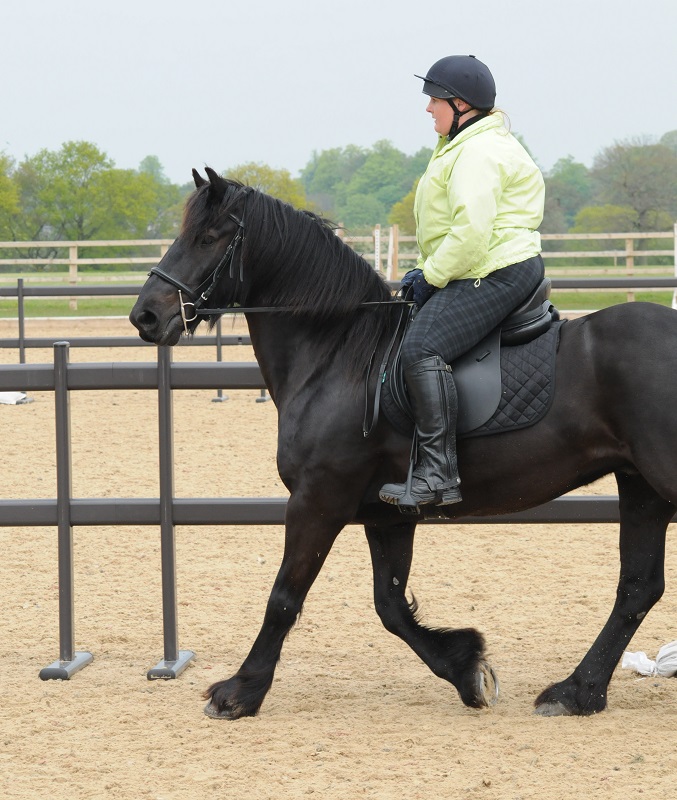
The discomfort felt by a heavier rider who is riding in a too-small saddle will be translated to the horse. Additionally, the rider’s inability to ride with a pliable seat and a swing through her back will effectively double her natural weight for the horse to bear. Photo: Steven Lilley/Flickr
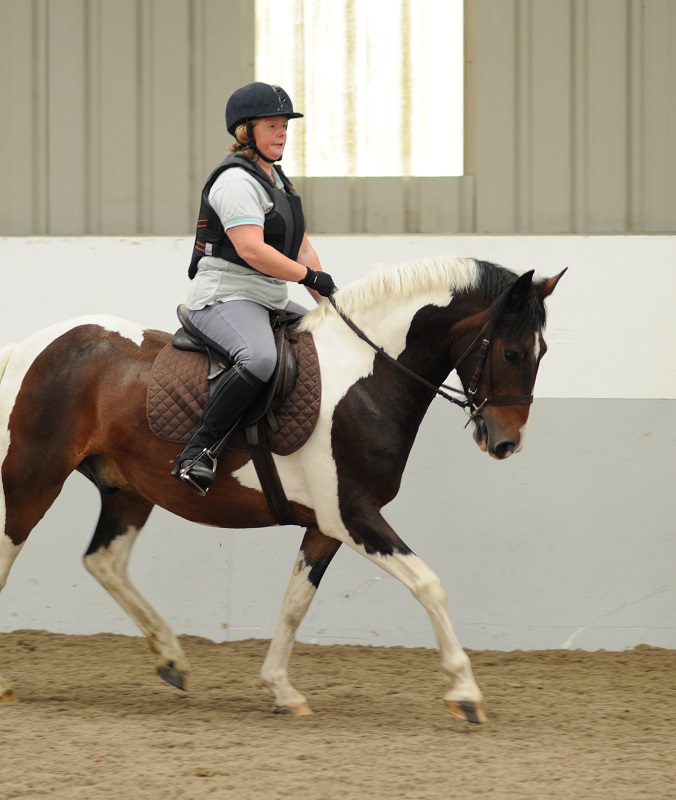
Ideally, the heavier rider should look for a horse that has a large enough saddle support area to accommodate the bigger saddle required by the rider’s conformation. A saddle that is too long for the horse will extend past the saddle support area and impinge on the horse’s kidneys and, in mares, the ovaries. Photo: Steven Lilley/Flickr
Too Small for the Rider…
If a heavier rider sits in a saddle that is too small, she has no chance for a pliable seat and will not be able to swing through her back in harmony with the swinging of the horse’s back; this effectively doubles her natural weight. Riding in a saddle that is too small can also cause rider health problems, including slipped discs, constant back pain, recurring bladder infections, impotence, and hip damage even to the point of requiring hip replacement. Damage to the horse can include lameness, sacroiliac sublaxation, vertebral damage, and pinched nerves along the spinal column – all painful conditions that can result in behavioural issues such as bucking, stumbling, and refusal to work.
Too Long for the Horse…
Ideally, the heavier rider should look for a horse that has a large enough saddle support area (the weight bearing surface on which the saddle sits) to accommodate the bigger saddle required by the rider’s conformation. A saddle that is too long for the horse’s back and extends past the saddle support area (which ends at the 18th thoracic vertebra) will impinge on the horse’s kidneys or, in mares, the ovaries, causing significant discomfort and pain for the horse. The horse will be understandably reluctant to move forward and round his back, and may react by bucking, stumbling, or rearing – instinctive reactions to pain rather than a conscious effort to misbehave. On more stoic horses, the back may sink into a swayback. This effectively doubles the rider’s weight as the rider becomes unable to swing with the movement of the horse using the natural four curves of her spinal column.
Typically, the heavier rider will be most comfortable in an 18.5 to 19-inch saddle, while the average horse has a saddle support area that can accommodate a 17.5-inch panel. This problem can be accommodated; in these cases we say the top of the saddle is for the rider, while the bottom of the saddle is for the horse.

Ideally, the saddle should sit in what is called the saddle support area, with the tree points behind the shoulder and no further back than the 18th thoracic vertebra. Photo courtesy of Schleese
Saddle Fit for the Horse
It is critically important that the saddle also be adjusted to the horse and that his needs are taken into consideration. The gullet must leave enough room all around the withers that when the horse is in motion and the muscles begin to “grow” (contract and expand), the saddle doesn’t pinch. The tree points need to have the same angle as the shoulder to allow freedom of movement here as well (think of “sliding doors”) and not injure the horse by chipping off the sensitive shoulder cartilage.
In addition to saddle length, tree width (not to be confused with tree angle) is critical when considering saddle fit for the horse. Heavier riders will need softer padding in their saddle panels and sometimes even additional saddle pads (as long as the tree is wide enough to accommodate this extra padding). more of an issue it will be if the saddle bridges. There needs to be accommodation for some ability of the saddle to “rock” with banana-shaped stuffed panels to compensate for the extra weight of the rider. If the panels are too straight, the weight of the rider and saddle will dig into the horse’s loins or shoulder.
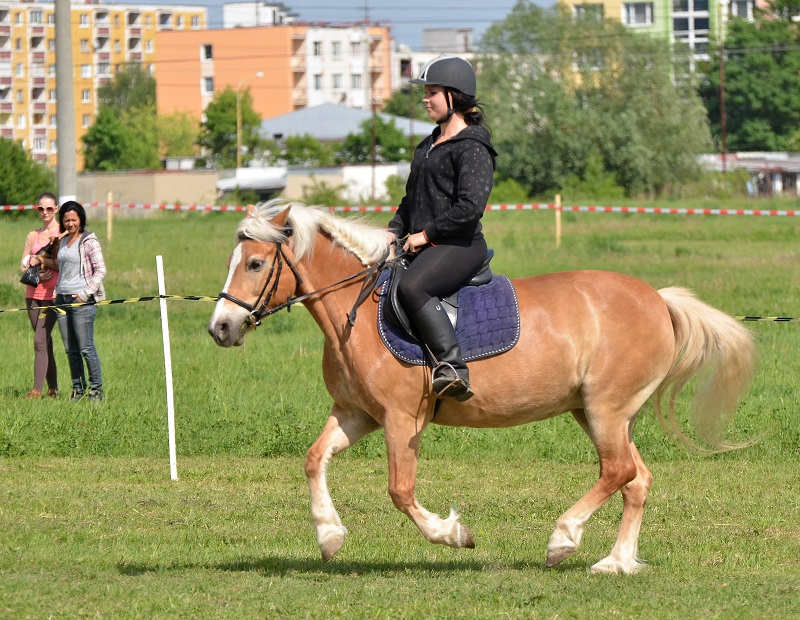
The damage done to a horse’s back by an improperly fitting saddle will only be compounded by the weight of a rider whose weight or size is not appropriate to the horse’s weight bearing capacity, which is dependent upon the horse’s size and conformation. The saddle in this photo is also far forward of the saddle support area. Photographer: Marcel Jancovic/Shutterstock.com
Related: How to Select and Fit an Equestrian Riding Helmet
The Importance of Regular Saddle Fit Checks
Saddle fit should be checked regularly, regardless of whether you are a heavier rider, because the horse’s conformation will change over time. However, the heavier the rider, the more often the saddle will need to be refitted to accommodate the constant change in the shape of the horse’s back. This is in large part due to the fact that with a heavier rider, the saddle padding will compress faster, and once the balance is compromised, the rider will start to “clench,” losing the softness of the seat and sitting harder and heavier into the horse’s back.
Let’s remember that horses were not meant to be ridden – we have forced this on them – and the unnatural weight this activity places on the horse’s back will cause the horse’s conformation to change. Proper saddle fit is critical to maintaining the horse’s back health, and the best way to ensure proper fit is to understand that saddles will need to be fitted on a regular basis.
For further information and detailed instructions on how to determine for yourself whether your horse fits your horse, visit www.saddlesforwomen.com.
Main Photo: While important for all horses and riders, regular saddle fit checks are especially critical for the heavier rider because the saddle padding will compress more quickly, compromising the rider’s balance and the horse’s back health. Photo: Steven Lilley/Flickr





